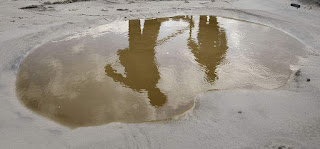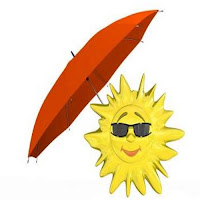How to get safe outdoor water in survival situation
Well,
I don’t think it’s necessary to emphasize the importance of clean water to you
when you are in a survival situation, because that’s why you are reading this article.
We
are in a time when science and technology develops ten times faster than it used
to be before. The first outdoor water filter came to the world in the year
2005, now there are more than ten kinds of survival water filters available
on the market that provide clean and safe water for outdoor survivors. So you
should at least have one of them prepared in your backpack or in your emergency
kit. If not, then you probably need to scroll down.
Uncovered water
sources
l River
and stream water
Obviously
listening for nearby streams or rivers will be at the forefront of your mind if
you need water. Further, looking around and following animal tracks can also be
an option to finding water uncovered sources. Lush green vegetation is also a
sign that water is nearby. Typically, animals stay close to water sources. If
you can find a track and follow it, chances are it can lead to water. Further,
swarming insects can also signal water sources are nearby. Bird flight paths in
the morning or evening can point you in the right direction.
l Three
–crotch water and dew.
Three
–crotch water requires filtration before you drink it. Heavy dew can provide
one with an ample source of water. Dew will settle on foliage such as grasses
and tree limbs at night. If you have a plastic bag (sandwich bag, trash bag,
grocery bag, mylar blanket) in your pack, you can cover the limbs of trees and
add a rock to provide weight. Secure the bag to collect moisture from the air.
Over the course of the day the plant will transpire and produce moisture that
will collect at the low point. Poke a hole in the bottom of the bag and collect
the water. Collecting water from the grasses should be done before the sun
rises. Tie absorbent cloth around your shins and take a walk through high
grass.
l Rainwater
Rainwater
is the fastest way to collect water in the wild. In most rural areas, rainwater
can usually be consumed without risk of disease or illness. If it rains, use
any and all containers you can get your hands on to collect it. Securing your
rain coat to a tree or limb will help collect larger amounts of water and you
can direct it to a container for consumption.
l Snow and
Ice.
If
you’re near snow and ice, melt it and drink the water. Because eating frozen
snow can reduce your body temperature and lead to dehydration, take the extra
step and melt it and filter it to purify for drinking purposes.
Covered water
sources
l Plant water
Bamboo
is a sure source of drinking water in the jungle, tapping the bamboo sections
to listen to its content, use your survival knife to open it and drink, this
kind of water is always safe to drink without process because they are formed
in a sealed container and bamboo are not toxic plant.
l Underground water
Both in forested
mountains and arid mountains you
can have success digging a seep, though you're going to have far fewer places
to search for water. Seeps can be dug in crevices or dry stream beds that are
lined with green vegetation; the darker green the vegetation, the better
chances typically you'll have of finding water.
Very Important
There's
no guarantee though that it's completely safe to drink. If you have the means
to boil or filter water do so. Better safe than sorry.



Comments
Post a Comment